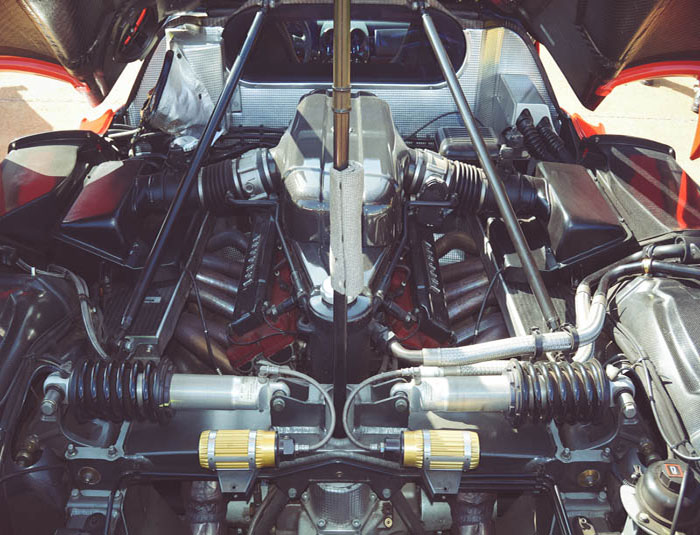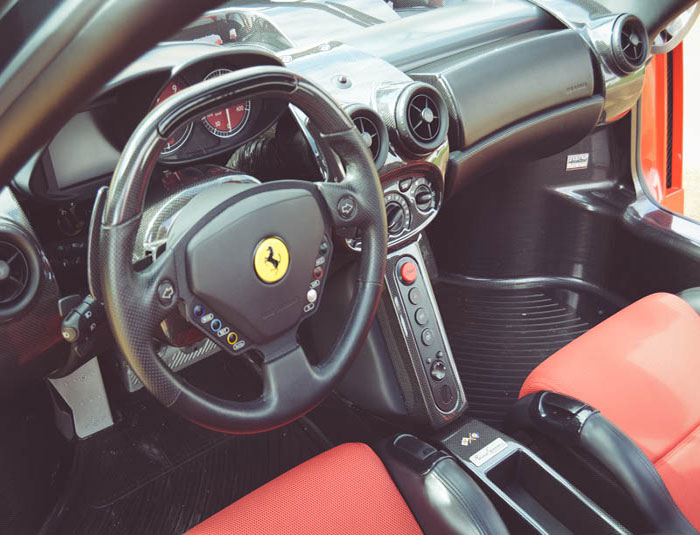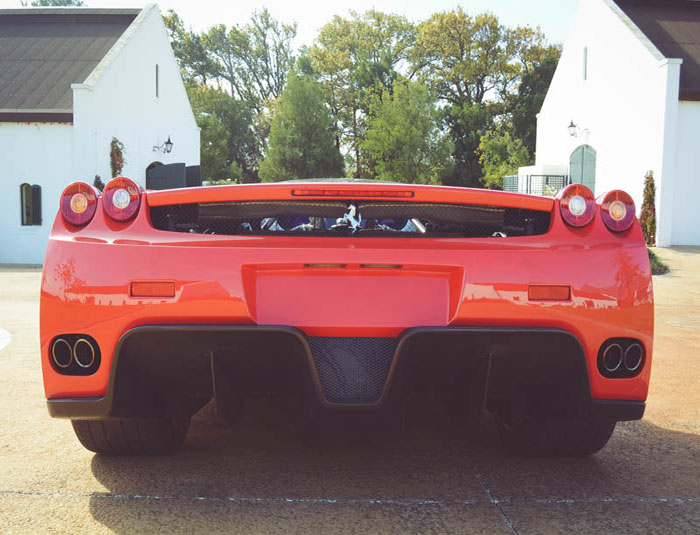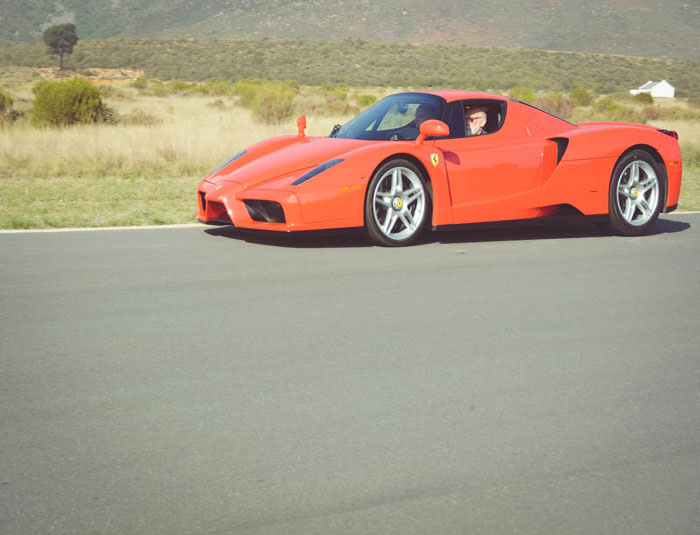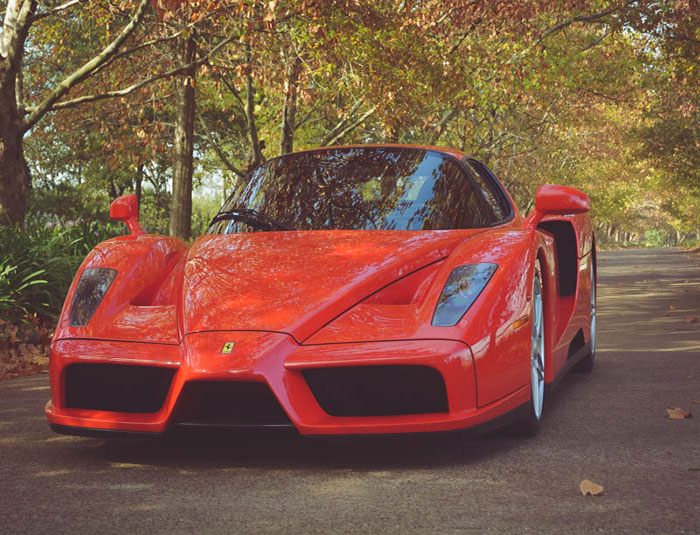
25 May COLLECTION IN ACTION – E
An alphabetical series of short driving impressions of some of the museum’s car collection. This month we go behind the wheel in an Enzo Ferrari.
Enzo Ferrari. Millions of people around the world know the name. The man was a legend in his own lifetime, and is still revered by all manner of car enthusiasts. Born in Modena in 1898, Enzo was destined to become one of the most powerful forces in road and race car history. Briefly, he started the Scuderia Ferrari racing team in 1929, was Alfa Romeo’s racing chief in 1938 but left after a year to run his own business mainly supplying parts to other racing teams before WWII broke out, during which his factory was bombed. When peace returned, Enzo relocated to Maranello and set up Ferrari SpA in 1947. The rest, as they say, is history.
Enzo – the man – died in 1988 but his legacy continues to this day. Enzo – the car – was born in 2002 to both honour il Commendatore and to celebrate the team’s first Formula 1 constructors’ and drivers’ championship titles of the new millennium (2000 with Michael Schumacher). The car is a mid-engined berlinetta supercar incorporating plenty of F1 technology of the time – Schumacher was deeply involved in the car’s development – as well as such niceties as traction and stability controls and active aerodynamics.
Painted in the more orange-hued Scuderia Red, the carbon fibre bodywork is an amalgam of F1 design cues at the front and Le Mans sportscar/supercar girth at the rear. It is 4 702 mm long, 2 035 mm wide, 1 147 mm high and weighs 1 255 kg. Purposeful it most certainly is, the smooth contours incorporating numerous vital air scoops to keep this powerhouse of a road car adequately fed and cooled. And with a V12, double overhead-cam, variable timing 48-valve Tipo 140B fuel-injected engine mounted amidships pumping out 485 kW at 7 800 r/min and a stonking 793 N.m of torque at 5 500, it needs to be catered to.
Release the hidden lever and the scissor door rises to reveal a fairly spartan, somewhat messily laid-out cabin. Step over the sill and drop down into the firm and torso-hugging seat, fasten the harness and prepare to ignite. Hit the red start button and the instant bellow from behind is LOUD but the idle is rhythmic until everything warms up and the revs drop a little to a beat that is still raucous but mechanically tuneful. Typically, the drilled aluminium pedals are offset to the centre but the resulting slightly skew driving position is no handicap. Press the brake, release the fly-off handbrake, select first with the right-hand paddle – there is no gear lever – lean on the accelerator and Enzo pulls away with obvious pent-up energy.
The view forwards over the flat-topped power-assisted steering wheel is panoramic and as the blacktop begins to flash by underneath, winding up the revs and flipping the paddle as the redline approaches, every nuance of the driving experience is transmitted to the driver through the steering, pedals and seat. It roars in relentless fashion, each physical upshift of the six-speed sequential electrohydraulic transmission momentarily softening the drama until the revs (very quickly) rise again towards that near-8 000 limit – the faster you go, the faster the shift engages. At the opposite end of the spectrum, the all-ventilated 380 mm carbon-ceramic disc brakes are reassuringly grippy without the need for Schwarzenegger calf muscles. Downshifts with the left-hand paddle are accompanied by blips of the throttle, the level and fierceness commensurate with rate of retardation.
Performance claims are a top speed of 323 km/h and a 0-96 km/h time of 3,5 seconds. There is a modest wing that rises from the centre rear of the bodywork but only after a downforce of 7 600 Newtons is reached at about 300 km/h, such is the Enzo’s inherently excellent aerodynamics. Riding on aged and hard Bridgestone Potenza Scuderia tyres, I was not about to indulge in any heroics, but even with traction nannies engaged and the limited-slip diff helping the cause, the Enzo demands concentration even in a straight line: the steering is very sensitive. It is reported that Schumacher was no quicker around Ferrari’s Fiorano test track with the aids switched out that with them active.
The Enzo was offered to existing owners of F40 and F50 Ferraris and the initial run of 349 cars was pre-sold. However, a further 50 were built and this car is one of those, carrying number 392. Like most limited-edition Ferraris, the Enzo offers something a little bit over and above the bread and butter models. It is a worthy tribute to a most influential individual. MM
